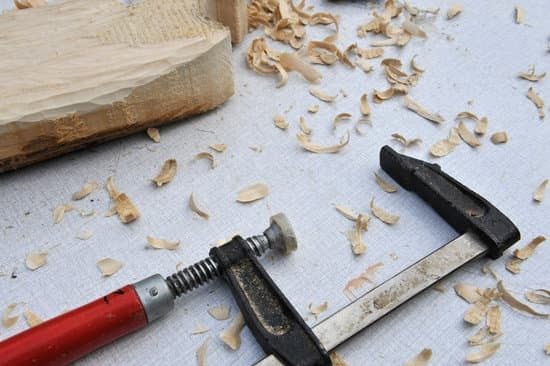Are you looking to add a touch of elegance and functionality to your wooden cabinets? In this article, we will discuss the step-by-step process of how to make woodwork cabinets sliding doors. Sliding doors are not only aesthetically pleasing but also offer practical benefits such as space-saving and easy access to the cabinet’s contents.
Understanding the basics of woodworking is essential before embarking on the project of making sliding doors for woodwork cabinets. We will cover everything from selecting the right materials to planning, designing, cutting, shaping, assembling, adding hardware, finishing touches, and maintenance tips for your sliding doors.
Selecting the right materials is crucial in ensuring the durability and overall quality of your sliding doors. From choosing high-quality wood to selecting the appropriate hardware for smooth operation, we will guide you through every step of the process. Planning and designing are equally important as accurate measurements and a well-thought-out blueprint will determine the success of your project.
As we delve into each section of this article, you will gain valuable insight into the intricate process of crafting sliding doors for woodwork cabinets. Whether you are a seasoned woodworking enthusiast or just starting out, our comprehensive guide will equip you with the knowledge and skills needed to tackle this project with confidence. So let’s roll up our sleeves and get ready to make some stunning sliding doors for your woodwork cabinets.
Selecting the Right Materials
When it comes to building woodwork cabinets with sliding doors, one of the most crucial aspects is selecting the right materials. The quality of the wood and hardware chosen will determine the durability, functionality, and overall aesthetic appeal of the sliding doors. High-quality materials will ensure that the cabinet doors not only look great but also operate smoothly for years to come.
For the wood portion of the project, it’s important to choose a high-quality hardwood such as oak, maple, or cherry. These woods are known for their durability and ability to withstand wear and tear. It’s essential to select wood that is free from knots, warping, or any other imperfections that could compromise the integrity of the sliding doors.
| Wood Type | Quality Characteristics |
|---|---|
| Oak | Durable, resistant to moisture |
| Maple | Stable and strong |
| Cherry | Smooth texture, attractive color |
Planning and Designing
Measuring for Accuracy
Before beginning the construction of cabinet sliding doors, it is important to take accurate measurements of the cabinet opening. This will ensure that the doors fit perfectly and operate smoothly once installed.
Use a tape measure to determine the height and width of the opening, taking into account any trim or molding that may affect the dimensions. It is also crucial to measure the thickness of the doors as this will determine how much space needs to be accounted for within the cabinet.
Sketching and Blueprint Creation
Once precise measurements have been taken, it is time to create a sketch and blueprint for the cabinet sliding doors. The sketch should include detailed annotations indicating dimensions, materials, and hardware placement. Additionally, the blueprint should provide a clear visual representation of how the doors will look once completed. This step is essential for visualizing the end result and ensuring that all necessary details are accounted for before proceeding with construction.
Considerations for Functionality
During the planning and designing phase, it is important to consider how the sliding doors will function within the cabinet. Take into consideration factors such as clearance space needed for smooth operation, as well as any design elements that may impact usability.
Additionally, think about how you want to access items within the cabinet – whether you prefer full accessibility with both doors sliding open simultaneously or if you want one door to remain stationary while the other slides. Taking these functionality considerations into account during planning will result in a more practical and user-friendly final product.
By carefully measuring, sketching, and creating a blueprint for your cabinet sliding doors, you can effectively set yourself up for success in constructing beautiful and functional wooden cabinet sliders.
Cutting and Shaping
When it comes to making sliding doors for woodwork cabinets, using the appropriate tools is crucial in achieving a professional and polished outcome. The first step in this process is to gather all the necessary tools and materials before beginning the cutting and shaping phase. Here are some essential tools for cutting and shaping wood for sliding doors:
- Circular saw: A powerful tool that can make straight cuts in wood with precision
- Table saw: Ideal for making accurate cuts and creating smooth edges on wooden panels
- Miter saw: Used for cutting precise angles in wood, perfect for creating door frames
- Jigsaw: Ideal for cutting curved or irregular shapes in the wood, such as decorative details on the doors
- Wood chisels: Essential for carving out detailed designs or making small adjustments to the wood
Once you have gathered all the necessary tools, it is important to ensure that you are using high-quality blades and bits to achieve clean and precise cuts. Dull blades can cause splintering or uneven edges on your wood, so be sure to check and sharpen your tools before getting started.
Another important consideration is safety. Always wear protective eyewear and follow proper safety procedures when using power tools. It’s also important to use clamps or guides to secure the wood while cutting and shaping to prevent any accidents or mistakes.
In addition to having the right tools, it’s also important to have a clear plan of action when it comes to cutting and shaping the wood for your sliding doors. Measure twice and cut once – this old adage holds true in woodworking and is especially crucial during this phase of construction.
Taking your time and double-checking measurements will ensure that your sliding doors fit perfectly into your cabinet. By using these techniques, you can achieve professional-looking sliding doors that will add both functionality and aesthetic appeal to your woodworking project.
Assembling the Doors
When it comes to making woodwork cabinet sliding doors, the assembly process is a crucial step in ensuring that the doors are functional and visually appealing. Follow these steps to assemble your sliding doors with ease:
1. Prepare the materials and tools: Before you start assembling the sliding doors, make sure you have all the necessary materials such as high-quality wood panels, rails, and hardware. Additionally, gather the appropriate tools including a saw, drill, screwdriver, and measuring tape.
2. Attach the rails: Begin by attaching the rails to the top and bottom of the cabinet opening. Use a level to ensure that the rails are perfectly straight and parallel to each other. This will provide a smooth and effortless sliding motion for the doors.
3. Insert the panels: Once the rails are securely in place, carefully insert the wood panels into the grooves of the rails. Make sure that each panel fits snugly without any gaps or uneven edges.
4. Install handles or pulls: Depending on your design preference, install handles or pulls onto your sliding doors at this stage. Measure and mark where you want them to be placed before drilling holes for installation.
By following these steps meticulously, you will be able to assemble your woodwork cabinet sliding doors correctly and efficiently. Proper assembly is key to ensuring that your sliding doors operate smoothly and add functionality to your cabinets.
Remember that proper assembly of sliding doors is essential for their functionality within woodworking cabinets. By following this step-by-step guide and using quality materials and tools, you can ensure that your cabinet’s sliding doors are not only aesthetically pleasing but also durable and long-lasting.
Adding Hardware
Now that you have successfully cut and shaped the wood for your sliding doors, it’s time to focus on adding the necessary hardware to complete the project. The hardware includes handles, locks, and hinges, which are essential for the functionality and aesthetic of the sliding doors. Proper installation of these components ensures smooth operation and security for your woodwork cabinets.
When selecting hardware for your sliding doors, it’s important to choose high-quality materials that complement the overall design of your cabinets. Consider the style and finish of the handles, locks, and hinges to ensure they blend seamlessly with the woodwork. Additionally, make sure to measure and plan the placement of these components before making any installations.
To install handles on your sliding doors, carefully mark and drill holes in the appropriate locations based on your measurements. Use a template or guide to ensure accuracy and consistency when adding multiple handles to your cabinet doors. Similarly, installing locks and hinges requires precision and attention to detail. Follow manufacturer instructions or seek professional guidance if needed to ensure proper alignment and functionality.
As you work on installing the hardware for your sliding doors, take your time to ensure everything is properly in place. This final step is crucial in completing your woodwork cabinets with sliding doors. Once installed, test the handles, locks, and hinges to ensure they operate smoothly without any issues.
Finishing Touches
After assembling the sliding doors for your woodwork cabinets, it’s important to focus on the finishing touches to ensure a professional-looking result. This step involves sanding down any rough edges, applying the desired stain or paint, and sealing the doors to protect them from wear and tear. Here’s how to make woodwork cabinets sliding doors look polished and professional.
Firstly, start by sanding down the entire surface of the sliding doors using fine-grit sandpaper. This will smooth out any imperfections and create a clean canvas for applying the stain or paint. Be sure to sand with the grain of the wood to avoid creating scratches or marks that may be visible once stained.
Next, you’ll want to choose a stain or paint that complements the overall design of your woodwork cabinets. Apply an even coat of stain or paint using a brush or rag, following the manufacturer’s instructions for drying time between coats if necessary. Once you achieve your desired color depth and coverage, let the doors dry completely before moving on to sealing them.
Finally, it’s crucial to seal the sliding doors with a clear finish to protect them from moisture and daily use. Apply a thin coat of polyurethane or clear varnish using long, even strokes in the direction of the grain. Allow the first coat to dry completely before lightly sanding with fine-grit sandpaper and applying additional coats as needed for added durability.
| Step | Description |
|---|---|
| Sanding | Use fine-grit sandpaper and sand with the grain of the wood. |
| Staining/Painting | Apply an even coat using a brush or rag, following manufacturer’s instructions. |
| Sealing | Apply thin coats of polyurethane or clear varnish in direction of grain. |
Maintenance Tips
Regular Cleaning and Inspection
To ensure the longevity and functionality of your sliding cabinet doors, it is essential to establish a regular cleaning and inspection routine. Use a soft cloth and mild wood cleaner to remove dust, dirt, and any potential stains from the surface of the doors.
Additionally, inspect the hardware for any signs of wear and tear, such as loose screws or damaged hinges. By addressing these issues promptly, you can prevent further damage and maintain the smooth operation of the sliding doors.
Lubrication
Another important maintenance tip for sliding cabinet doors is proper lubrication of the tracks and rollers. Over time, dirt and debris can accumulate in the tracks, causing friction and difficulty in opening and closing the doors. Use a silicone-based lubricant to grease the tracks and rollers, ensuring that the doors slide effortlessly along their path. Regular lubrication will not only prolong the life of your sliding doors but also prevent unnecessary strain on the hardware.
Preventive Measures
In addition to regular cleaning and lubrication, there are preventive measures you can take to maintain the functionality of your cabinet sliding doors. Avoid slamming or forcing the doors open and closed, as this can cause damage to both the doors themselves and their hardware.
Be mindful of heavy objects leaning against or obstructing the path of the sliding doors, as this can lead to misalignment or damage over time. By taking these simple preventive measures, you can ensure that your sliding cabinet doors remain in optimal condition for years to come.
By implementing these maintenance tips and tricks, you can ensure that your woodwork cabinets’ sliding doors remain in top condition for years to come.
Conclusion
In conclusion, learning how to make woodwork cabinets sliding doors can be a rewarding and fulfilling project for any woodworking enthusiast. The importance of sliding doors in cabinet design cannot be overstated, as they not only provide functionality and accessibility but also add a touch of elegance and sophistication to the overall look of the cabinet.
By selecting the right materials, careful planning and designing, precise cutting and shaping, meticulous assembling, adding the necessary hardware, and applying finishing touches, one can create a set of sliding doors that is both functional and visually appealing.
One of the most satisfying aspects of completing this project is being able to admire the finished product and knowing that it was created with one’s own hands. The sense of accomplishment that comes from successfully making woodwork cabinets sliding doors is unmatched. Additionally, understanding the process behind creating sliding doors gives woodworkers an invaluable skill that can be applied to future projects.
Furthermore, as with any woodworking project, it is crucial to remember that maintenance is crucial to ensure the longevity and functionality of the sliding doors. By following proper maintenance tips and tricks, such as regularly cleaning and lubricating the hardware, ensuring proper alignment, and repairing any damage promptly, woodworkers can keep their sliding doors in excellent condition for years to come.
Overall, mastering how to make woodwork cabinets sliding doors opens up a world of possibilities for woodworking enthusiasts and provides a sense of achievement that makes every step of the process worthwhile.
Frequently Asked Questions
Can You Make Solid Wood Cabinet Doors?
Yes, we are capable of making solid wood cabinet doors. We have the necessary expertise and tools to create high-quality, custom-made cabinet doors to fit our clients’ specific needs and preferences.
How Do You Make Wooden Sliding Doors Slide Easier?
Improving the sliding action of wooden sliding doors can be achieved by ensuring that the tracks and rollers are clean and free from debris. Additionally, applying a lubricant to the tracks and rollers can significantly improve the ease of sliding.
Can You Make Your Own Sliding Doors?
It is possible to make your own sliding doors with the right materials, tools, and skills. DIY sliding door kits are available for purchase, and with some woodworking know-how, it is feasible to create custom sliding doors for various applications such as closets or room dividers.

Hi everyone! I’m a woodworker and blogger, and this is my woodworking blog. In my blog, I share tips and tricks for woodworkers of all skill levels, as well as project ideas that you can try yourself.





